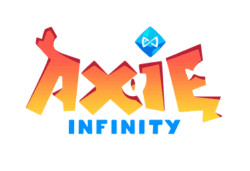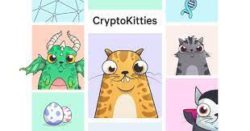Unleashing the Power of NFT Gaming and Virtual Creatures

In the ever-evolving world of digital innovation, Non-Fungible Tokens (NFTs) have emerged as a transformative force, bringing a new dimension to the gaming industry. These unique digital assets have given rise to a phenomenon where virtual creatures, items, and worlds are bought, sold, and owned as NFTs. In this article, we’ll explore the power of NFT gaming and how virtual creatures are taking the gaming experience to a whole new level.
Understanding NFTs
Before delving into NFT gaming, it’s essential to grasp the concept of NFTs themselves. NFTs are cryptographic tokens that represent ownership of a unique digital asset or item, often stored on a blockchain, which ensures their scarcity and authenticity. Unlike cryptocurrencies like Bitcoin or Ethereum, NFTs are indivisible, meaning they cannot be exchanged on a one-to-one basis.
The Fusion of NFTs and Gaming
The fusion of NFTs and gaming has created a dynamic ecosystem that offers players and collectors unprecedented opportunities:
1. True Ownership of In-Game Assets
Traditionally, in-game assets such as skins, weapons, and cosmetics were owned by game developers. NFTs enable players to have true ownership of these assets, allowing them to buy, sell, and trade in-game items freely.
2. Play-to-Earn Models
NFT gaming introduces the concept of “play-to-earn,” where players can monetize their skills and time spent in a game. By earning valuable NFTs through gameplay, players can sell these assets on NFT marketplaces, potentially turning their gaming hobby into a source of income.
3. Scarcity and Collectibility
Virtual creatures and items minted as NFTs are often limited in quantity, creating scarcity and collectibility. This scarcity can drive demand and increase the value of these digital assets, making them highly sought after by collectors.
4. Interoperability Across Games
Some NFTs are designed to be interoperable across multiple games and virtual worlds. This means that a virtual creature or item acquired in one game can be used or traded in other compatible games, enhancing their utility and value.
Also, read – The Intersection of Machine Learning and NFT Gaming: Implication And Potential
Virtual Creatures: The Evolution of Digital Collectibles
In the realm of blockchain technology and non-fungible tokens (NFTs), virtual creatures have emerged as a captivating and innovative concept. These digital beings, often referred to as “crypto collectibles,” represent a fascinating fusion of technology, artistry, and creativity. Virtual creatures take the concept of collectibles to a whole new level by leveraging the power of blockchain and NFTs to offer unique and highly customizable digital assets.
What Are Virtual Creatures?
Virtual creatures are digital entities that exist exclusively in the virtual world. They are a far cry from traditional collectibles like stamps or trading cards. Instead, these creatures are born, bred, and customized within the digital realms of blockchain-powered games and applications.
Moonie NFT is one of the best Non-Fungible Token (#NFT) and game in the market. It’s a unique blockchain-based gaming platform that allows users to collect, trade and battle virtual creatures called Moonies.
— ABDELBASSET BENALI (@Abdelbassetb94) January 14, 2023
Key characteristics of virtual creatures include:
- Uniqueness: Each virtual creature is one-of-a-kind or part of a limited series. They are distinguished by a combination of attributes, appearances, and traits, making them highly individualistic.
- Ownership: Unlike traditional in-game assets, virtual creatures are owned by the players or collectors themselves. They are represented as NFTs on blockchain networks, ensuring transparent and immutable ownership records.
- Customization: Many virtual creature games and platforms allow users to customize their creatures, selecting their appearance, abilities, and characteristics. This level of personalization adds depth and emotional attachment to these digital beings.
- Utility: Virtual creatures often serve various purposes within the games or applications in which they are featured. They can be companions, fighters, or even contributors to in-game economies.
- Interoperability: Some virtual creatures are designed to be interoperable across different games and virtual worlds. This means that a creature owned in one game can be used or traded in another compatible game, enhancing their utility and versatility.
The Appeal of Virtual Creatures
What makes virtual creatures as NFTs so appealing to gamers, collectors, and developers? Several factors contribute to their growing popularity:
1. Personalization and Creativity
Virtual creatures empower players to exercise their creativity. From choosing their creatures’ appearances to customizing their abilities, players have a significant degree of control over the digital beings they own. This personalization fosters a sense of ownership and attachment.
2. Collectibility and Rarity
The scarcity of virtual creatures is a driving force behind their collectibility. With limited quantities or unique traits, these digital assets become coveted by collectors seeking rare and valuable additions to their portfolios.
3. Investment Potential
Just as with physical collectibles, some collectors view virtual creatures as potential investments. The belief that the value of these digital assets will appreciate over time has led to speculation and trading in the NFT marketplace.
4. In-Game Utility and Gameplay
Virtual creatures contribute to gameplay dynamics in blockchain-based games. They can be used for various purposes, such as battling other creatures, completing quests, or generating resources, adding strategic depth and excitement to the gaming experience.
5. Community and Social Interaction
The ownership of virtual creatures often extends beyond individual enjoyment. Communities form around these creatures, where collectors share their experiences, showcase their prized possessions, and participate in virtual creature events, competitions, and trading.
Examples of Virtual Creature Games and Platforms
Several blockchain-based games and platforms have embraced the concept of virtual creatures. Here are a few notable examples:
1. Axie Infinity
Axie Infinity is a popular blockchain game featuring adorable creatures called Axies. Players collect, breed, and battle their Axies, earning rewards in cryptocurrency. Axies are represented as NFTs, making them tradable and collectible assets.
2. CryptoKitties
CryptoKitties was one of the earliest NFT-based games to gain widespread attention. Players collect and breed unique digital cats, each represented as an NFT. The game’s success contributed to the broader adoption of NFTs.
3. MyCryptoHeroes
MyCryptoHeroes is an Ethereum-based game where players collect historical heroes and send them into battles. These heroes, represented as NFTs, have distinct abilities and attributes.
4. Decentraland
Decentraland is a virtual world built on the Ethereum blockchain. In this metaverse, users can buy, sell, and customize virtual land and assets, including virtual creatures, represented as NFTs.
Challenges and Considerations
While virtual creatures as NFTs offer exciting possibilities, there are challenges and considerations to keep in mind:
1. Environmental Concerns
The energy consumption of blockchain networks that support NFTs has raised environmental concerns. Developers are actively exploring solutions to reduce the carbon footprint of NFTs.
2. Regulatory Landscape
The regulatory landscape for NFTs is evolving, and compliance with laws and regulations is essential for creators, developers, and collectors.
3. Market Volatility
The NFT market can be volatile, with prices subject to rapid fluctuations. Participants should exercise caution and conduct due diligence before buying or trading virtual creatures.
In conclusion, virtual creatures as NFTs represent a groundbreaking intersection of technology, creativity, and ownership. These digital beings are more than just collectibles; they are dynamic assets that offer personalization, utility, and investment potential. As the NFT gaming space continues to evolve, virtual creatures are likely to play a central role in shaping the future of digital ownership and gaming experiences.































































